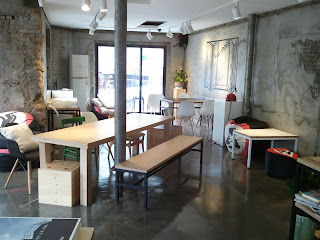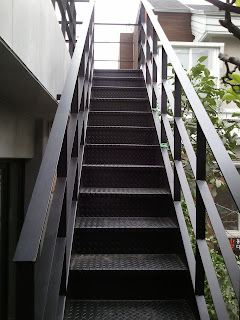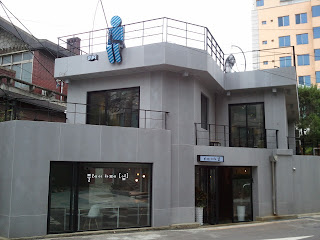I'm in Hongdae during the Chuseok holiday break. Hongdae is my favorite part of Seoul and Chuseok is my favorite holiday so I decided to combine them into a super awesome time. So far so good. I intend to stay here for the next three days. I'll be blogging and planning productions; specifically for the introduction video for my vlog series.
Today, I met my friend, Aaron, at a new play cafe called YUP. I'm not sure about the difference between a regular cafe and a play cafe. Maybe it has something to do with the impressive live sound system and drum set in the back of the second floor. It is nice and worth visiting before doing more exciting things or for a simple, quiet afternoon.
LOCATION
Walk straight from Hongdae station exit 1 passed the major intersection until the Hyundai dealership. Make a right and you should be able to see the cafe straight ahead. Click the address at the bottom of the post for an accurate map.
DESIGN
The interior is very impressive. I prefer simplicity and efficiency in design and YUP has both. Some nice touches are the bare concrete walls with patches of exposed brick work, most likely from the original building, and the stained concrete floor.
The first floor is small. It can accommodate a few groups of guests. The bar is located near the rear. It is simple and not very impressive considering they just opened.
The second floor is wide with massive windows. The track lighting is also well done but completely unnecessary during the day. The seating arrangement is efficient with possibilities for creative expansion. The seats are diverse to give it a thrift store feel but new and glossy so it really doesn't feel right. Two small balconies are also available for smokers.
The roof is very clever with fake grass and a decent view. Again, seating is limited but can hold a lot should the need arise.
The music is horrible. The design and location scream for some light hip hop or simple dance beats but instead they play cheesy acoustic covers of 90's hits and shitty neo jazz.
FOOD and DRINK
Usually this would come first but they won't serve food until the Chuseok holiday is over. If the food is as good as my Americano then I'm not looking forward to it. It costs 4,000 won and tasted like generic coffee available at any restaurant that doesn't specialize in coffee. Almost like single serving freeze dried coffee but more expensive. Almost like the horrible coffee a seafood restaurant would serve for dessert.
PATRONAGE
Students. Plenty of outlets are everywhere for notebook computers and smart devices. It would be nice for a couple as the first part of a date but the music is so bad I wouldn't recommend it.
FINAL RECOMMENDATION
Visit if you have a few hours to kill, or need to study or prepare for anything. Bring a notebook or mp3 player and good headphones. It is easy to zone out and accomplish a lot.
 |
| Second Floor - Next to stairs |
 |
| Second floor - View of stairs and 'play' area |
 |
| Second floor - Balcony |
 |
| Stairs to roof |
 |
| Roof |
 |
| Second floor - Massive windows and thrift store style seats |
 |
| Stairs to first floor |
 |
| View from street |
 |
| View from street |
 |
| View from street |
 |
| First floor - Limited seating |
 |
| First floor - Bar |











